Human Anti-CD15 / FUT4 Antibody Product Attributes
CD15 / FUT4 Previously Observed Antibody Staining Patterns
Observed Subcellular, Organelle Specific Staining Data:
Anti-FUT4 antibody staining is expected to be primarily localized to the vesicles.
Observed Antibody Staining Data By Tissue Type:
Variations in CD15 / FUT4 antibody staining intensity in immunohistochemistry on tissue sections are present across different anatomical locations. An intense signal was observed in hematopoietic cells in the bone marrow. More moderate antibody staining intensity was present in hematopoietic cells in the bone marrow. Low, but measureable presence of CD15 / FUT4 could be seen in cells in the red pulp in spleen, glandular cells in the stomach and non-germinal center cells in the lymph node and tonsil. We were unable to detect CD15 / FUT4 in other tissues. Disease states, inflammation, and other physiological changes can have a substantial impact on antibody staining patterns. These measurements were all taken in tissues deemed normal or from patients without known disease.
| CD15 / FUT4 General Information | |
|---|---|
| Alternate Names | |
| FUT4, Fucosyltransferase 4, Myeloid-Specific alpha (1,3) Fucosyltransferase | |
| Molecular Weight | |
| ~220kDa | |
| Chromosomal Location | |
| 11q21 | |
| Curated Database and Bioinformatic Data | |
| Gene Symbol | FUT4 |
| Entrez Gene ID | 2526 |
| Ensemble Gene ID | ENSG00000196371 |
| RefSeq Protein Accession(s) | NP_002024 |
| RefSeq mRNA Accession(s) | NM_002033 |
| RefSeq Genomic Accession(s) | NC_000011, NC_018922 |
| UniProt ID(s) | P22083 |
| UniGene ID(s) | P22083 |
| HGNC ID(s) | 4015 |
| Cosmic ID(s) | FUT4 |
| KEGG Gene ID(s) | hsa:2526 |
| PharmGKB ID(s) | PA28431 |
| General Description of CD15 / FUT4. | |
| CD15 plays a role in mediating phagocytosis, bactericidal activity,, chemotaxis. It is present on >95% of granulocytes including neutrophils, eosinophils, to a lesser degree on monocytes. In addition, CD15 is expressed in Reed-Sternberg cells, some epithelial cells. CD15 antibody is very useful in the identification of Hodgkin s disease. CD15 is occasionally expressed in large cell lymphomas of both B, T phenotypes which otherwise have a quite distinct histological appearance. | |

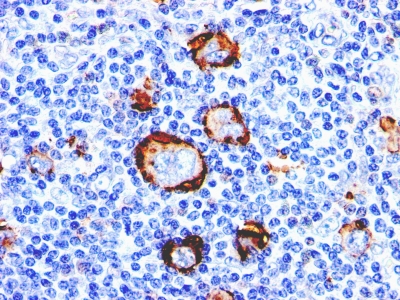

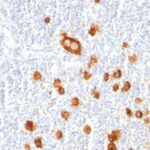
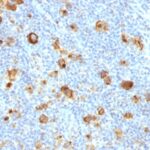
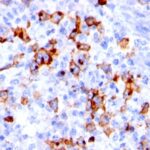
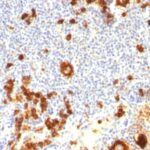

There are no reviews yet.